A Record Achievement: Montrose Vintage Vinyl Shop Feeds The Senses
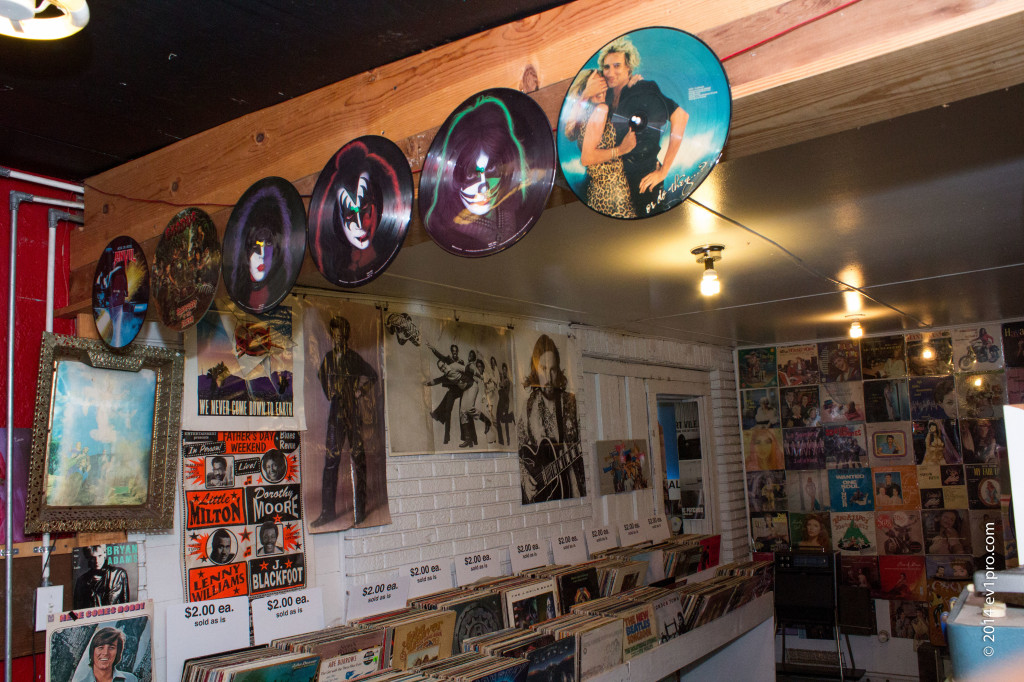
The first thing you notice at Sound Exchange, a tiny record store on Richmond Avenue at Hazard, isn’t sound. It’s scent: The place smells wonderful, the record-shop equivalent of a bakery. There’s a crisp fragrance of well-preserved paper; a sweet tone that might be old-fashioned glue; an oaky scent of clean wooden floors.
Sound isn’t what you notice second, either. It’s sight: The spread of vintage vinyl offers a visual phantasmagoria as arresting as the Surrealism room at the Menil. From the ’60s, a nerdy chanteuse with a Peter Pan collar smiles while holding a guitar, a Bardotesque vixen pounds a bongo, and a band of clean-cut middle-aged men poses in cardigans. From the ’70s, a bare-chested male singer and four bikini-clad muses are gorgeous, untoned reminders of how rock star bodies once looked. From the death-metal era, a gothic-lettered black album proclaims, “God Hates Us All.”
Only after you’ve taken in images captured for the ages on album covers do you register the soft, elegant sound of jazz singer Julie London. While not an obvious choice for a store known for vintage rock, London’s voice meshes with Sound Exchange’s distinct aesthetic: unexpected, enticing, a low-key invitation to explore.
“In the 20th century we would have been called an underground record store because of certain ways that we do things,” says co-owner Kevin Brennan, a quiet man in a grey T-shirt and a baseball hat. “I’ll say hello when you come in, maybe. But I’m not going to come over and try to sell you something.”
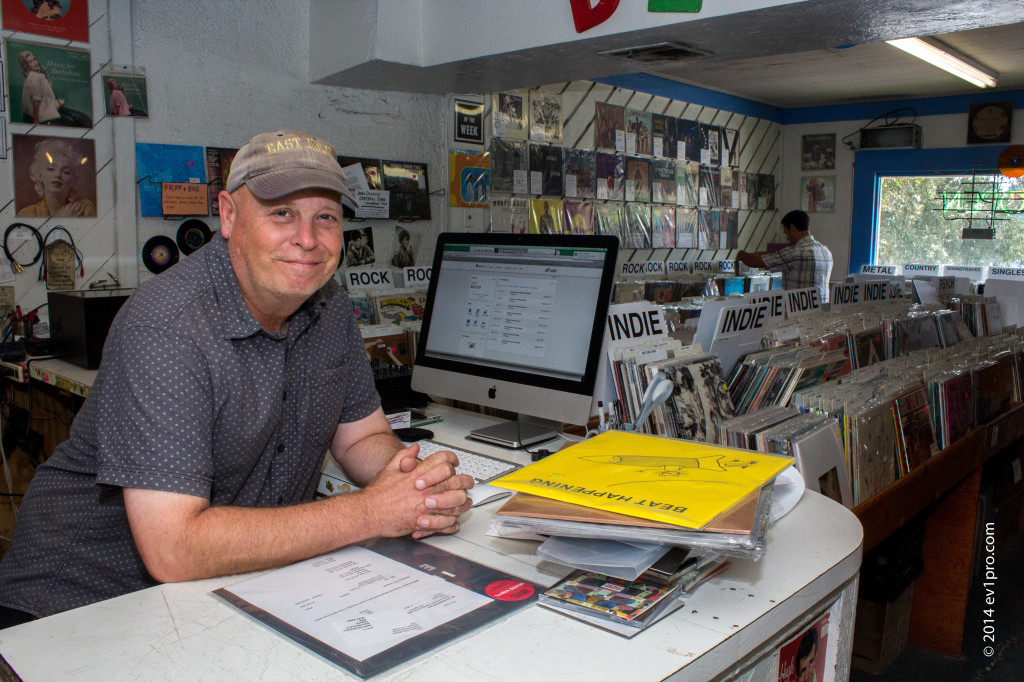
That philosophy has had traction: Sound Exchange has survived into the MP3 era after opening in 1978 at the dawn of Houston’s punk movement. In its grumpy and colorful online manifesto, ”The Unwritten History of Sound Exchange,’‘ the current owners describe the store’s first location, a cramped nook in a shabby Rice Village strip center. Quickly swamped by Houston music lovers craving indie music, the store moved to lower Westheimer, at the time ”a haven for drug selling, using, and prostitution in a hair-raising array of flavors.” ”So of course,” the history continues, “rent was cheap, and we felt right at home. For several years people would literally drive in from the ‘burbs and tie up the street all night, driving up and down to look at the weirdos.”
When rent rose, the store moved again, two blocks away, enjoying a brief prosperity as one of Houston’s few purveyors of alternative rock. Then mainstream retailers caught on to the trend, bands that Sound Exchange had nurtured grabbed corporate deals whenever they could – and the store decided to ”take a giant step backwards.”
”Instead of wondering how we can reclaim our market share in the retail foray,” the manifesto explains, ”we decided to get back to basics, selling good music in a comfortable atmosphere.”
It was about this time, in 1998, that Brennan and co-owner Kevin Bakos, both long-time employees, bought the business. Bakos had moved to Houston while in middle school, and in the ’80s developed a reputation for designing album covers and T-shirts for local bands. Brennan, the son of Long Island, New York music teachers, arrived in Texas a little bit later than his partner, though he has been with Sound Exchange since hanging around the original Rice Village store in 1981.
“I came to Houston with a friend who had an uncle here,” Brennan says. “We just finished our junior years in college, and we were not sure were ready to start our adult lives.”
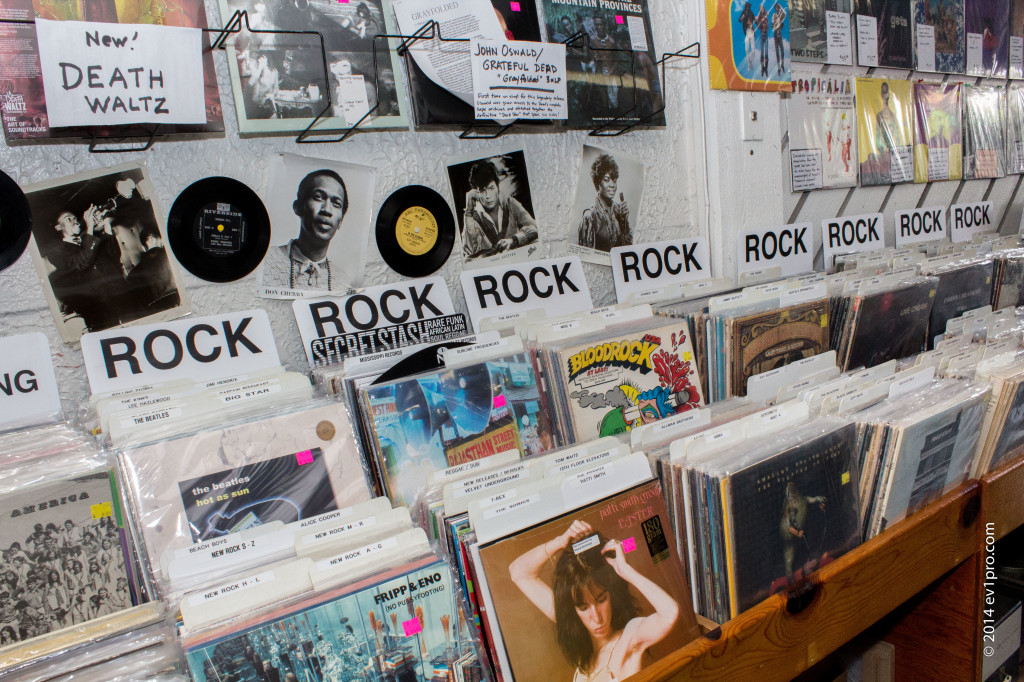
At Sound Exchange, Brennan would find, he never really had to. Ensconced in a former family house on Richmond, Bakos and Brennan turned the store into their idea of home. Outside, a grungy parking lot is edged with freshly-planted beds of fig ivy; inside, a foyer plastered with posters for upcoming shows gives way to a tidy interior with wooden record racks in each room.
Over the doorway, 45s in red, black, and orange lend a cheerful, rumpus-room vibe; the walls are lined with vintage LPs, many bearing obsessively neat handwritten labels: ”Grateful Dead. Nice pre-bar code pressing with textured cover for this 1970 album. Features the intentionally printed upside down rear cover.” The tidiness and album art featuring the likes of a pop singer named Joyce – whose eponymous LP shows a friendly women with large glasses and a regrettable hedgehog-like hairdo – make the store feel accessible. Touches like a folded T-shirt advertising ”Candlemas” (a skull pierced by a crucifix) ensure that it feels homey to more than run-of-the mill shoppers.
Specializing in hard-to-find albums, Sound Exchange survives not in spite of online music business, but because of a stubborn sector of music lovers who refuse to embrace it. What might be called the store’s metal room – an area dedicated to the joys of head banging rhythms – is a testament to that hands-on spirit.
“The metal kids built that section,” Brennan says. “I don’t love all the music. Without a doubt, we go where they take us. In the early days of the Internet, they’d come in with huge, printed-out lists of hard-to-find things they’d heard about. ‘I need this, and this, and this,’ they’d say. They built this part of the store up from scratch. I’m proud of them.”
Metal heads are by no means Sound Exchange’s only regulars. Brennan’s own taste runs from ’70s rock to experimental music to jazz singers such as London. Above all, he likes anything new. That broad range of taste pretty much reflects the broad range of Sound Exchange customers. Several DJs stop in regularly to season their playlists: DJ Sun, aka Andre Sam-Sin, the long-time host of KPFT’s “Soular Grooves,” came by earlier in the week, as did Stewart Anderson, one third of the DJ collective Fistful Of Soul, known for spinning vintage 45s at Shoeshine Charley’s Big Top Lounge. Brennan’s wife Rosa also comes in to stock up for her KTRU punk show, “Mutant Hardcore Flower Hour.”
Thinking about it, Brennan says, the typical profile of a Sound Exchange customer has to do with wanting something more than a sound. They want the sensory and emotional experiences that have attended music consumption for most of human history. “It’s the physical versus the download,” Brennan says. “Not everyone likes to spend hours and hours in front of a computer.”
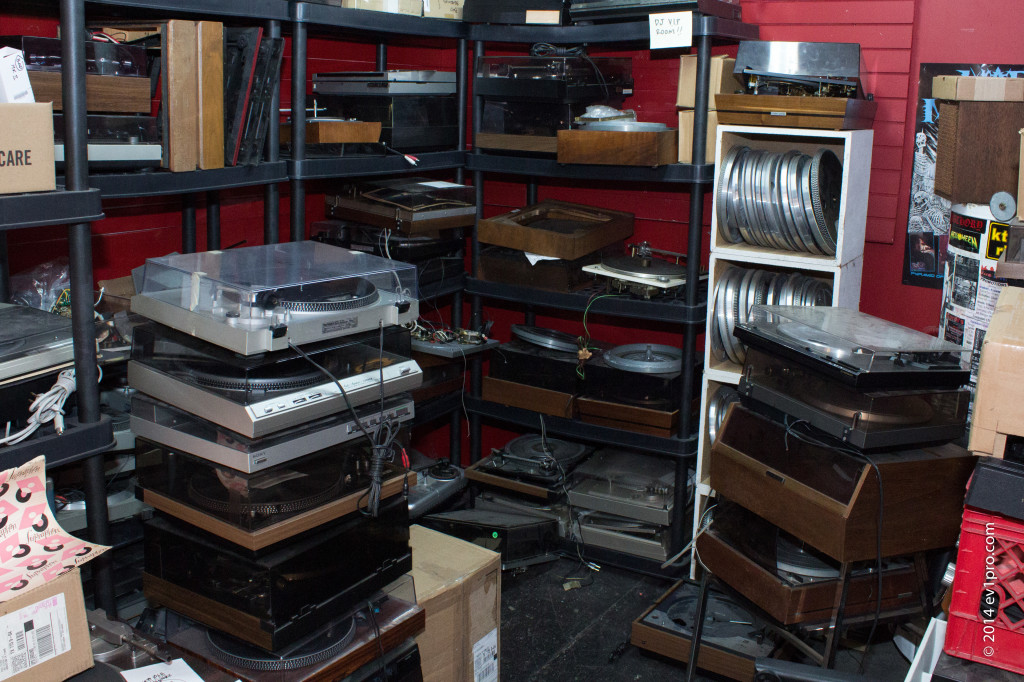
It’s hard to form an attachment to a download, he points out. But anything physical, including a couple of glued cardboard squares with a vinyl disc inside, “Anything physical, you can get attached to.”
That includes not just records, but also what records are played on. In a corner of the store’s metal room a 1940s-era turntable stands on a brightly painted stand like an idol on a shrine. It doesn’t work, but the store’s back room is full of turntables that do. Co-owner Bakos repairs 10 to 15 of them a month: a job that started as a favor and now feels to him like a mission. “There’s more than 100 years of records floating around the planet,’” Bakos says from behind the store counter. “’It’s like having the world’s biggest library – and suddenly learning to read.”
Interestingly, many Sound Exchange customers grew up with CDs, and learned on their own to enjoy records and shopping for them.
“Right here!” calls a sandy-haired young man, who has been listening in while studying a copy of Jethro Tull’s Aqualung. “I didn’t grow up with records. But after hours, I put on my Iron Maiden shirt, and I come here to look for treasures.”
“In fact,” he warms to the topic, “a lot of kids who come in here for heavy metal now are Latino. Some of the biggest bands don’t come through Houston – they’ll go to Laredo.”
Brennan loves this kind of conversation. “It’s true,” he says to the young man. “I think part of it has to do with the Catholic iconography, and a rebellion against it.” For Brennan, talking about music enhances it, the way good conversation improves food. Recently, Brennan says, a record customer told him something that caught his imagination: She said she relished the sensation of putting a record needle down on vinyl, and then waiting one, two, three seconds, knowing that something good would happen momentarily.
“That wait doesn’t happen on a downloaded song,” Brennan says. “But there’s a pleasure in it. All the senses are connected. So the smell or feel of something” – like a stereo needle – “triggers other senses. And they trigger memories.”
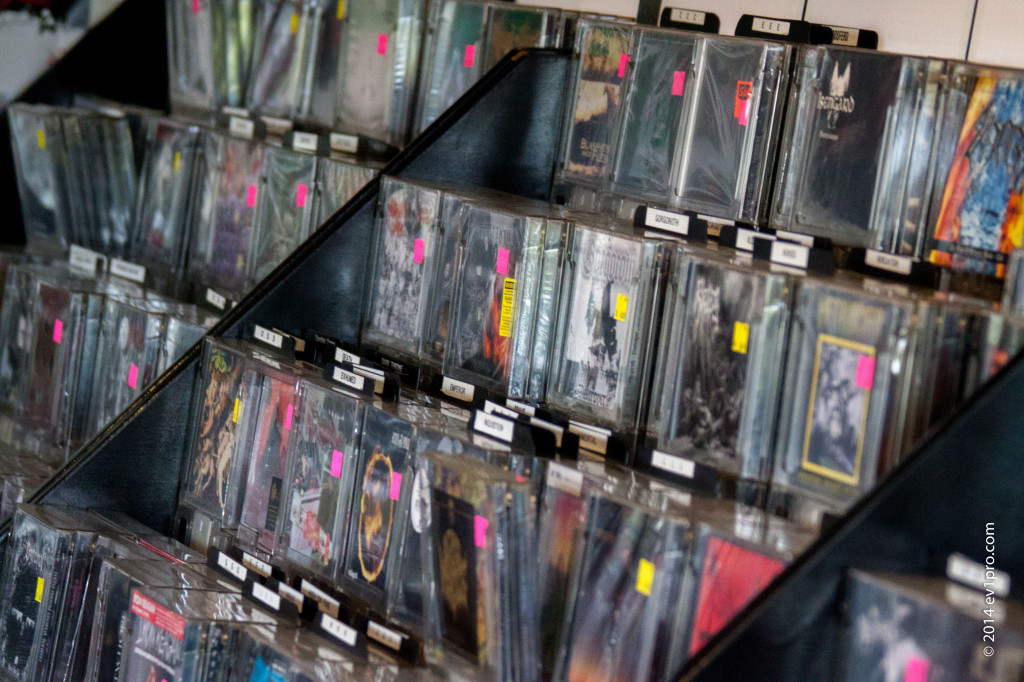
Even, it turns out, for metal heads. Over in the metal room, one of the few areas of Sound Exchange heavy on CDs rather than vinyl, 41-year-old Tomas Salinas is considering recordings with names such as Bestial Warlust and Mortiis. He lives nearby, and at work designs valves on a computer. At least once a week, after quitting time, he comes to Sound Exchange to browse for what he calls underground metal.
“It’s a little harder to find, darker, coarser – not what you’d hear at Toyota Center,” Salinas says. He has very dark hair and eyes and a gentle voice.
Wouldn’t it be easier to find and download that music from home?
“I’d rather have the physical object of a CD: the keepsake, the artifact,” Salinas says. “And I like the selection, the location and atmosphere. The fact that they play different stuff, like Julie London, speaks to how eclectic they are. You always find something new.”
Sound, scent, sight, touch: as Brennan says, our senses are meant to feed each other, not exist in isolation. After 35 years, and the supposed end of the record industry, Sound Exchange’s customers are still coming back for the feast.

